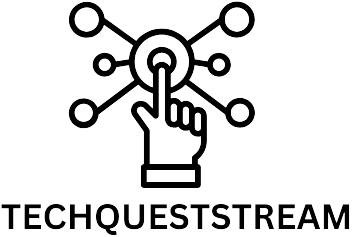In today’s fast-paced digital world, low-code platforms are the superheroes of software development, swooping in to save the day. They empower businesses to create applications at lightning speed, bypassing the clunky code that often slows progress. But with great power comes great responsibility, and that’s where low-code governance enters the scene.
Table of Contents
ToggleUnderstanding Low Code Governance
Low code governance refers to the framework and policies that guide the responsible use of low-code platforms. It ensures that organizations maximize innovation while minimizing risks associated with these development tools.
Definition of Low Code Governance
Low code governance encompasses practices and guidelines that direct how low-code applications are developed, managed, and scaled. It includes defining user roles, setting approval processes, and establishing compliance measures. Organizations benefit from implementing governance by fostering accountability and ensuring applications meet quality standards. Governance frameworks typically cover areas like security, data privacy, and integration with existing systems.
Importance of Low Code Governance
Low code governance holds significant importance in maintaining control and oversight. By implementing governance structures, organizations prevent unauthorized access and potential data breaches. Additionally, consistent application of governance reduces duplication of efforts and streamlines collaboration. Efficiency in application development results from clear policies and practices. Furthermore, governance provides a pathway for organizations to align tech solutions with business objectives, ensuring that the benefits of low-code development contribute to strategic goals.
Key Components of Low Code Governance

Low-code governance consists of several essential components that ensure effective utilization of low-code platforms. These components include policies and guidelines, security and compliance, and risk management.
Policies and Guidelines
Policies and guidelines play a crucial role in low-code governance. Organizations establish clear protocols that define user responsibilities and application development standards. Such protocols guide development teams in making informed decisions throughout the application lifecycle. By implementing structured processes for approvals and modifications, companies streamline workflows. Documenting best practices further enhances consistency across projects. Overall, comprehensive guidelines foster a collaborative environment while ensuring adherence to organizational goals.
Security and Compliance
Security and compliance are vital in low-code governance frameworks. Protecting sensitive data ensures organizations meet regulatory requirements and maintain customer trust. Audit trails and access controls minimize unauthorized usage of applications developed on low-code platforms. Engaging in regular security assessments identifies vulnerabilities and enhances platform integrity. Employing encryption techniques safeguards data during transmission and storage. Compliance measures align low-code applications with industry standards, ultimately ensuring sustainable practices within the organization.
Risk Management
Risk management forms a foundational aspect of low-code governance. Identifying potential risks associated with application development helps organizations mitigate negative impacts. Evaluating factors like data security, performance issues, and operational redundancies enables proactive measures. By implementing risk assessment tools, teams prioritize significant threats to minimize disruptions. Continuous monitoring of applications ensures timely updates and necessary interventions. Effectively managing risks supports long-term success while encouraging innovation through low-code initiatives.
Best Practices for Implementing Low Code Governance
Effective low code governance requires a structured approach to maintain control over application development. Organizations can achieve this by establishing well-defined frameworks, involving relevant stakeholders, and ensuring continuous improvement.
Establishing a Governance Framework
Developers must create a robust governance framework that outlines standards for application development. Clarity in user roles and responsibilities is essential to prevent confusion. Organizations benefit from documenting approval processes, which streamline decision-making and maintain oversight. Designing policies for compliance ensures that applications meet industry regulations and organizational goals. A clear framework empowers teams to innovate within safe boundaries.
Involving Stakeholders
Engaging stakeholders fosters collaboration and aligned objectives. By including business leaders, IT personnel, and end-users, organizations can gather diverse insights that enrich the governance process. Regular meetings to discuss governance issues help maintain transparency and accountability. Stakeholder feedback plays a critical role in refining governance practices and identifying areas for improvement. This inclusive approach also increases acceptance of governance policies across the organization.
Continuous Monitoring and Improvement
Implementing a system for continuous monitoring ensures that governance practices remain effective and relevant. Regular audits help identify potential risks and compliance gaps in low-code applications. Consistent analysis of performance metrics allows organizations to measure success against their goals. Engaging in ongoing training and development keeps teams updated on best practices. Adapting governance frameworks based on feedback and changing technologies promotes sustained innovation.
Challenges in Low Code Governance
Low code governance faces several challenges that can hinder its effectiveness. Organizations strive to balance agility with control in the application development process.
Balancing Agility and Control
Achieving a balance between fast-paced development and necessary oversight remains a significant challenge. Rapid application creation encourages innovation, yet it poses risks regarding compliance and security. Organizations often struggle to implement control measures without stifling creativity. Defined governance frameworks help in maintaining oversight while allowing teams to operate efficiently. Flexibility must exist within these frameworks to adapt to changing needs without compromising organizational standards. Continuous dialogue between business leaders and IT ensures that both agility and control are effectively managed.
Training and Awareness
Training and awareness play critical roles in successful governance. Organizations often face a knowledge gap among users regarding the boundaries of low-code platforms. Comprehensive training programs enhance user understanding of policies, security measures, and compliance requirements. Engaging workshops can foster a culture of responsibility and innovation. Regular updates and refresher courses help users stay current with evolving governance protocols. When users are well-informed, they become more accountable, reducing risks associated with unauthorized application development.
Low-code governance is essential for harnessing the full potential of low-code platforms while mitigating risks. By implementing a structured governance framework organizations can ensure that application development aligns with business objectives. This balance between agility and control fosters innovation without compromising security or compliance.
Continuous monitoring and stakeholder engagement are key to refining governance practices. As technology evolves so too must the strategies for managing low-code applications. Training and awareness initiatives further empower users to navigate these platforms responsibly. Ultimately a robust governance approach not only safeguards against risks but also cultivates a culture of creativity and collaboration within teams.





